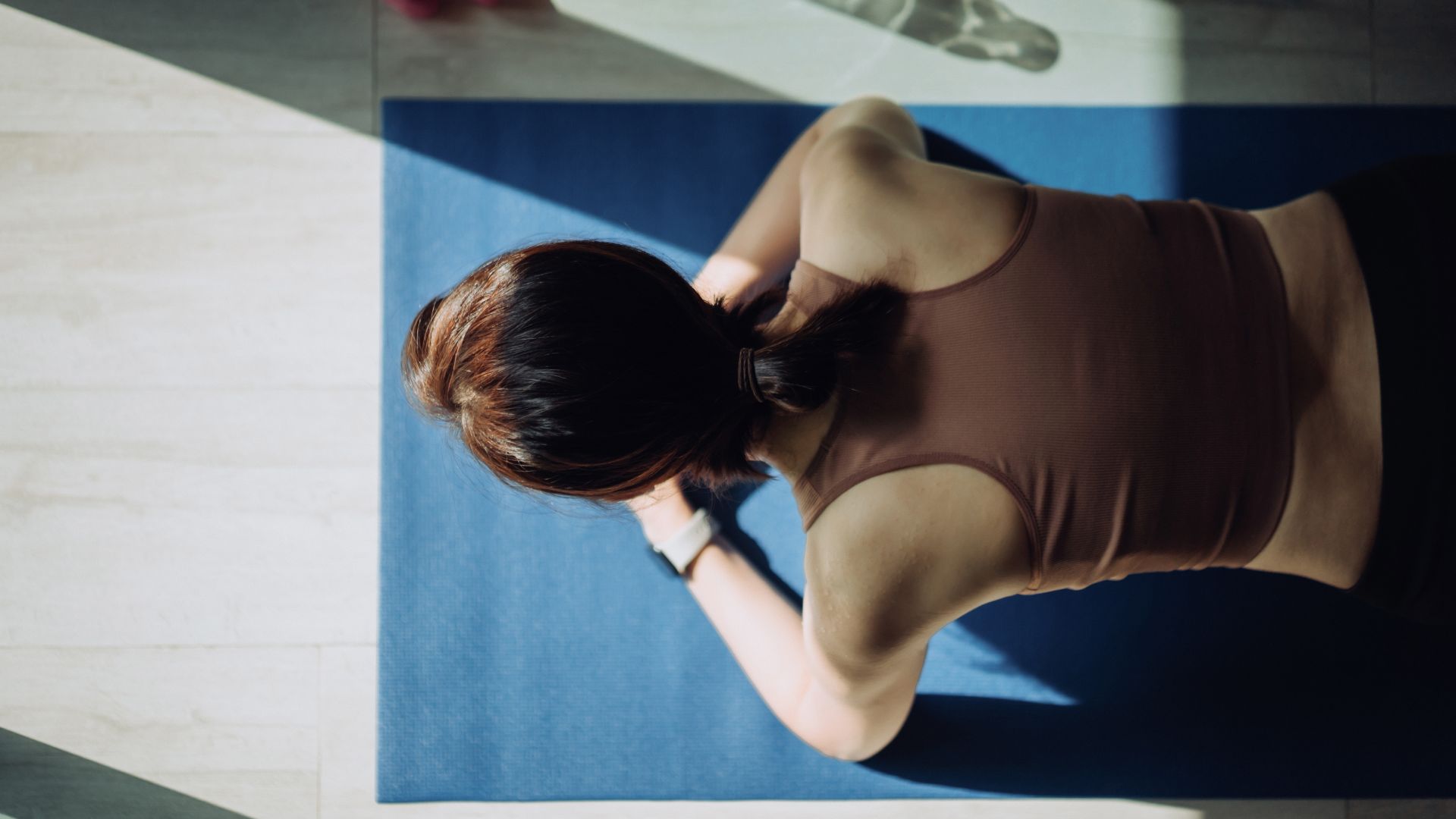How to do a plank: A 3-step guide to getting the core exercise perfect every time
Planks get a bad name, but they are one of the most effective exercises for boosting core strength, balance, metabolism, and preventing back pain


The key is knowing how to do a plank, however. As good as the exercise is, you have to do it exactly right to reap the benefits.
As one of the best core exercises to do at home, the plank can also help improve your posture, help build shoulder stability, and boost your fitness levels, says Charlotte Dunnell, a certified personal trainer and strength training specialist.
"There are so many ways to modify the exercise, too," she says. "For beginners, I would recommend starting with an incline plank, which is a plank performed on a sturdy elevated surface, such as a countertop or bench. As you progress and build up strength in your upper body and core, you can gradually lower the angle of the incline until you get to the point of performing a plank on the floor."
Whether you want to include this strength training exercise in your routine for the first time or brush up on the basics, here's what you need to know to learn how to do a plank from scratch.
How to do a plank
1. Starting position
- Start on all fours, with your hands positioned directly under your shoulders and knees positioned under your hips, she says.
- It may help to have a thick yoga mat under you if you have any pre-existing knee issues.
- You could also try starting with an elevated plank, as shown in the video.
2. Lift up
- Tuck your toes under so they are flat on the mat.
- Walk your legs back so they are completely straight.
- Lift your knees off the ground.
- Squeeze your legs together for maximal core engagement, she says.
3. Keep the position
- Hold the position for as long as you can without your form being compromised.
- Your body should make a straight horizontal line from your head to your feet.
- While holding the plank position, make sure to draw your belly button into your spine and squeeze your glutes. This is known as 'engaging' your core.
What is a common mistake when doing planks?
The most common plank mistake is letting your hips sag towards the floor, says Dunnell. "This puts excess strain on the lower back instead of allowing the core to do the work," she explains. It's why many people get back pain or aches when doing the exercise.
"Also, if your hip flexors are particularly tight, it can be more difficult to tuck your pelvis and ensure your core muscles are engaged," she notes.
How to avoid lower back pain when doing a plank:
Sign up to our free daily email for the latest royal and entertainment news, interesting opinion, expert advice on styling and beauty trends, and no-nonsense guides to the health and wellness questions you want answered.
- Make sure your pelvis is in the right position: "Imagine tucking your tailbone under. Think about pulling your pubic bone towards your belly button, and try releasing or stretching your hip flexors if it feels like tightness in the hips is preventing you from engaging your core and glutes," says Dunnell.
- Check your form: Do you plank in front of a mirror or film yourself to see if your plank looks as it should. If you have doubts, enlist the help of a personal trainer, who will be able to help get your form perfect, she says.
- Focus on the straight line: "Ensure your body forms a horizontal line from head to foot," she says.
If you do struggle with back pain when you're doing a plank, you're not alone. Dead bugs, bicycle crunches, and ab wheel rollouts all have a similar role in boosting core strength and stability, so you could also try one of these.
A Pilates ab workout will also have alternatives designed to strengthen the entire body, and often, there's also no plank in sight.
How long should you hold a plank?
If you can hold a plank for between 30 seconds and 1 minute, that's ideal. Of course, those totally new to plank exercises should aim for as long as they can manage and work up in time and intensity - even if that's only 10 seconds to start with.
Many studies have looked at the exercise and its impact on health and wellbeing. While the research hasn't said how long you should hold a plank, a study in the European Journal of Sports Science found that doing some training three days per week for 12 weeks had major benefits.
These benefits included changes in body composition, a lower resting heart rate, a decrease in sympathetic nervous activity (fight or flight) and an increase in parasympathetic nervous activity (rest and digest).
How to make a plank harder
Once you know how to do a plank, you can make the exercise harder and turn it into one of the best back exercises by adding weight - with one of the best weighted vests or ankle weights - and doing simple variations.
"Move either one arm or one leg while holding the plank position," she says. "For instance, you can do an alternating straight leg raise (in video) or try holding a high plank while doing an alternating hand circle."
Doing so makes the movement more unstable, she explains, forcing your abdominal muscles and glutes (buttocks) to work harder to stop your hips from twisting - another common plank mistake.
You could also try plank alternatives like the side plank and bird dog exercise, which also engages the core muscles and pelvic floor.

Grace Walsh is woman&home's Health Channel Editor, working across the areas of fitness, nutrition, sleep, mental health, relationships, and sex. She is also a qualified fitness instructor. In 2025, she will be taking on her third marathon in Brighton, completing her first ultra marathon, and qualifying as a certified personal trainer and nutrition coach.
A digital journalist with over seven years experience as a writer and editor for UK publications, Grace has covered (almost) everything in the world of health and wellbeing with bylines in Cosmopolitan, Red, The i Paper, GoodtoKnow, and more.